*Slingerland used the term Opal Pearl but this finish looks exactly like L & L’s Peacock Pearl or Leedy’s Rainbow Pearl finishes.
Read more1929- SLINGERLAND 5 x 14 *OPAL PEARL PROFESSIONAL MODEL
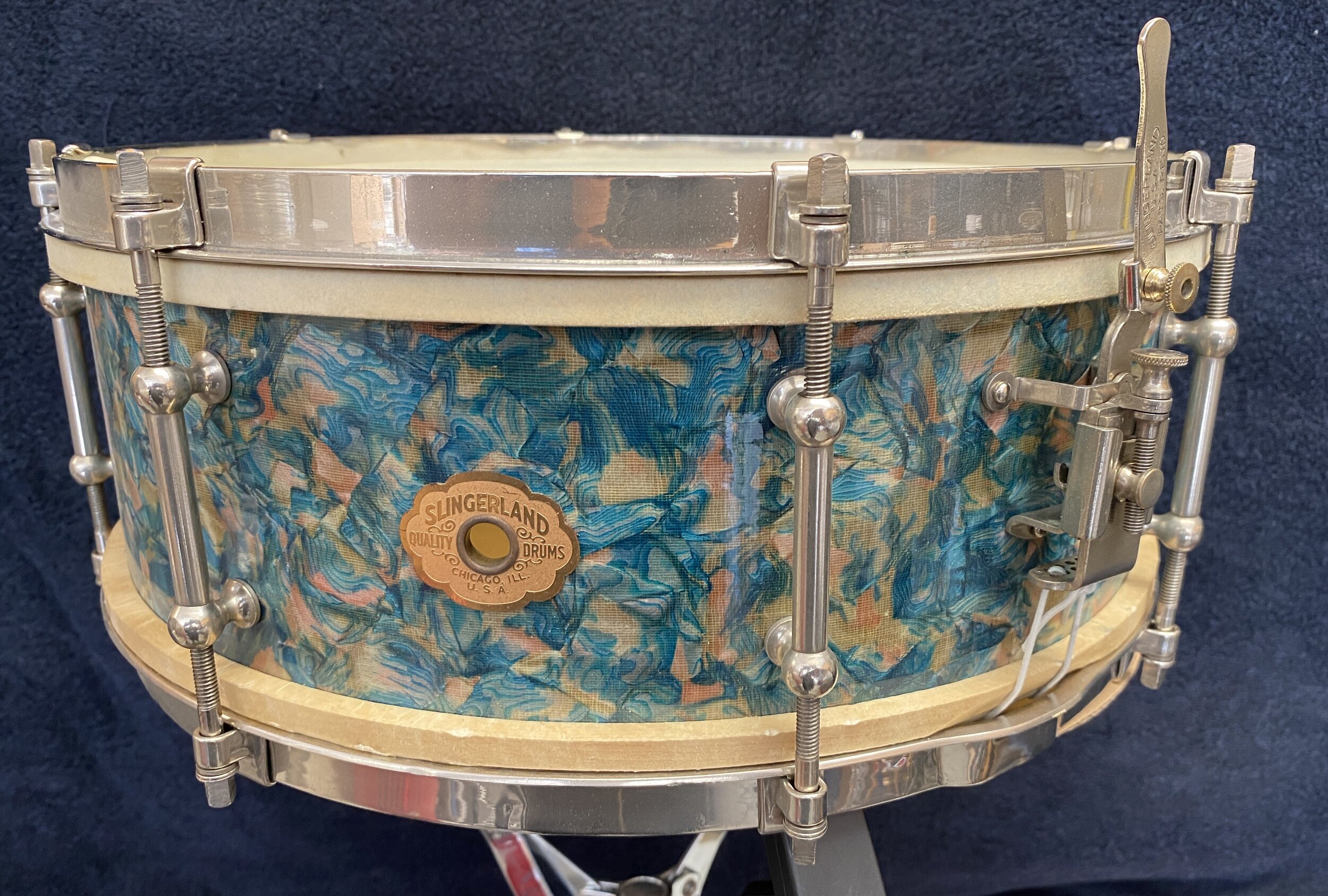
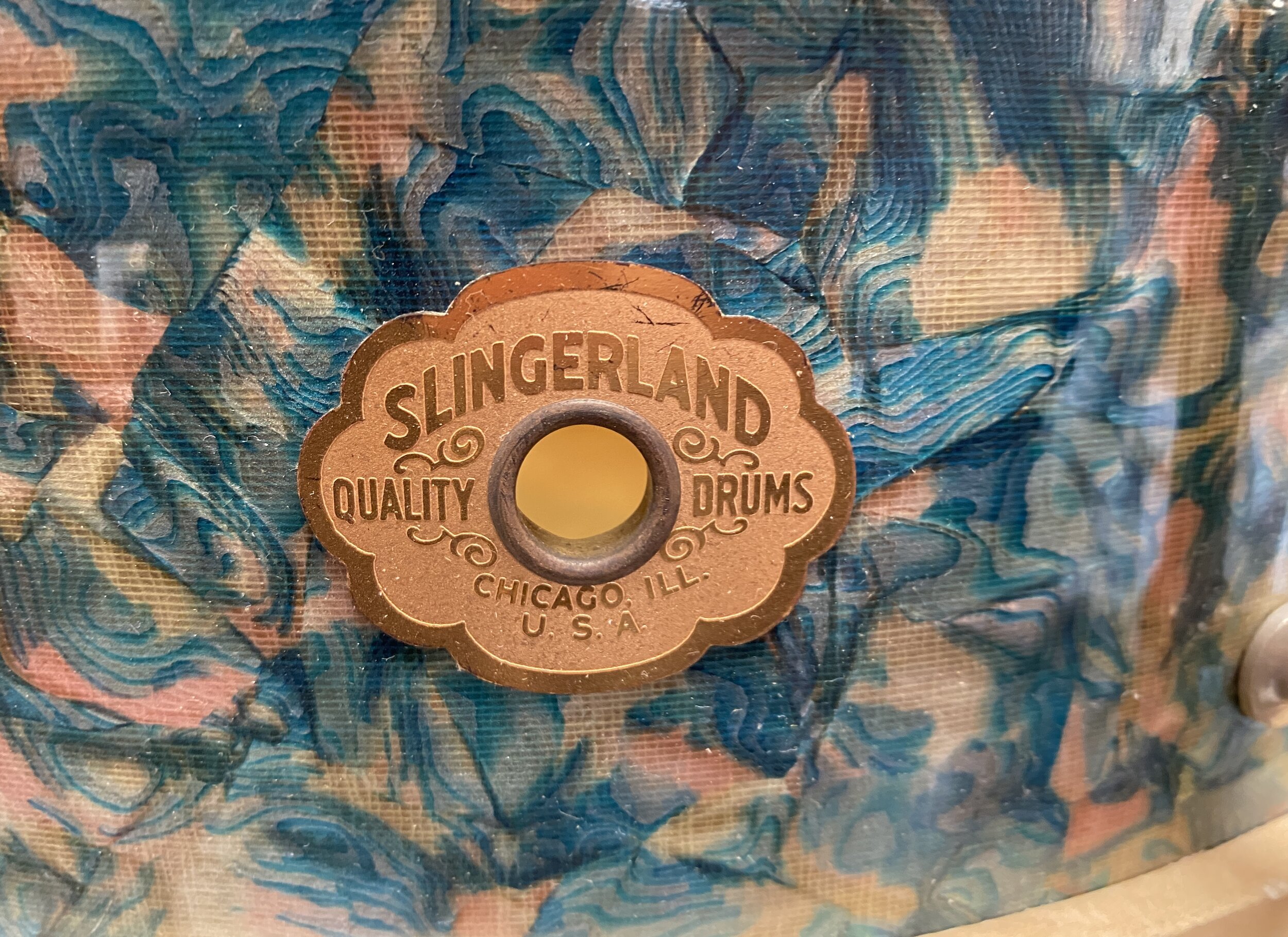
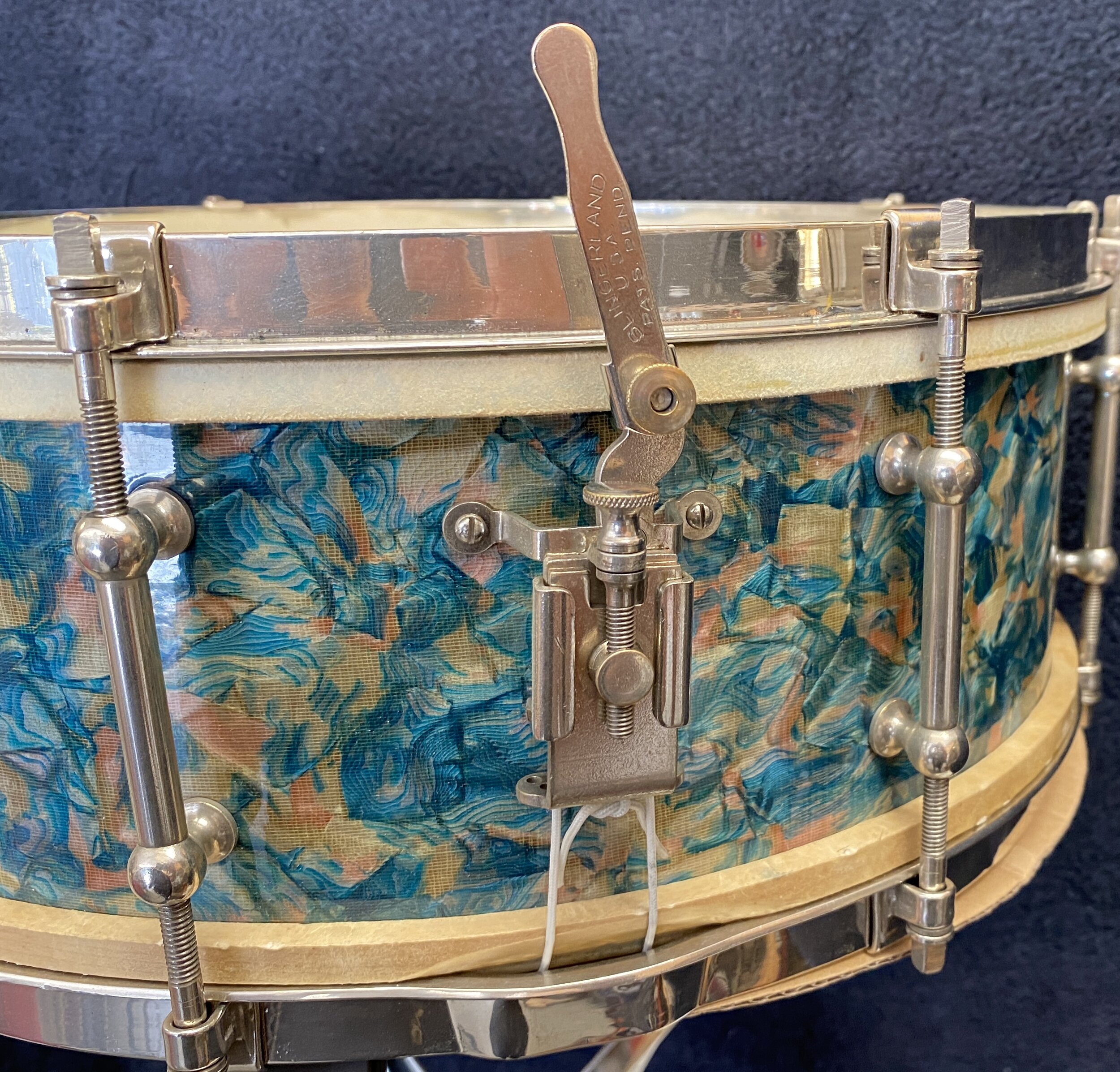

Drummer community & drum marketplace
The first vintage & Custom Drum Magazine, since 1988
*Slingerland used the term Opal Pearl but this finish looks exactly like L & L’s Peacock Pearl or Leedy’s Rainbow Pearl finishes.
Read moreAccording to Slingerland’s catalogs, the “Ben Pollack “Radio King” model was only produced for two years, between 1936-1938. This is a significant reason why this model is extremely rare and desirable. Also, the drum consumers of the day were placing overwhelming orders to Slingerland for the Krupa model. All of this was certainly because of Gene Krupa’s major popularity and drumming success.
Read more187 pics from the 2019 Chicago Drum Show!
Read moreI’d like to share some of our conversations in order for you to get to know Mike as I did, describe a few examples of his work, and also explain how his approach differs from that of other gifted hand engravers, like John Aldridge and Adrian Kirchler.
Read moreThe Slingerland “Streamlined” lugs were used on snare drums, bass drums (a larger version) and tom toms. While Leedy is credited with the first modern non-tubular lug casings, Slingerland was the first to use them on tom toms and bass drums.
Read moreProbably a special order... a "custom" drumset as we say today. This drumset was manufactured by METJAZZ brand (Jean Metzger drum maker), whose specialty was those very decorated drumsets, very fashionable in France from the 30s to the early 50s…
Read more“This drum has been nicknamed “The Dragon Drum” and was probably an un-catalogued one-off special order…
Read moreKelli Rae explains and demonstrates the sound effects used by drummers during the silent movie era, and also how the “talkies” eventually put many drummers out of work in the theatres. Bart van der Zee has graciously allowed Not So Modern Drummer to publish his podcast and direct our viewers toward his awesome podcast site at www.drumhistorypodcast.com
Read moreIn 1929, the Leedy Drum Company was sold to the C.G. Conn Company and a true innovation in lug design was introduced that year. Known as the “X” lug or “Box” lug, this new tension casing was attached to the drum shell from inside the drum with two screws.
Read moreIf you have ever found yourself looking at an old vintage drum and wondering, “What year was this made?”, or “When did they first use this type of snare strainer?”, or “What’s the name of this unusual finish?”, then this vintage drum guide may be of interest to you. The purpose of this guide is to help identify the various types, models, and features of vintage drums during the years 1923 to 1965. I consider this period to be the “golden age” of American drum manufacturing. This
Read moreI think that this drum could have possibly been an un-cataloged special order. Everything points to a mid-1920s L & L DeLuxe snare drum (black nickel plating, 12 pt. floral engraving and DeLuxe copper plated/gold lacquered hardware) with the exception that the shell is nickel plated with the 12 pt. floral engraving showing through.
Read moreGretsch drums are some of my very favorite sets to collect and play. The first drum set I actually owned was a 1960s Gretsch kit. It was a beautiful Aqua Satin Flame double bass set. I have owned several Gretsch kits in my collection over the years and currently have a few beautiful Gretsch sets which I highly treasure
Read moreThere are a few drum wraps that make my head turn.: Peacock pearl. Capri Pearl. Bowling ball blue oyster. Tiger eye / Root beer swirl. But when my eyes laid on one of the rarest wraps, Fantasia pearl, I knew I had to get my hands on it.
Read moreTried to Sell it, but i dont think anyone believes its Real ???....When i get confirmation from PEARL Headquarters, I'm hoping people believe its real !!. I bought it out of Delaware Ontario/Canada, with a load of antique/vintage drums/hardware/cymbals/accessories from the estate of an OLD Drummer !!..........Ken”
Read moreLeedy Rainbow Pearl was only offered in 1930. The finish on this shell is similar to a 1930s run of Ludwig & Ludwig Peacock Pearl (see photo) which makes sense as Leedy and L & L were both purchased by C. G. Conn, Ltd. in 1929 and these snare drums were literally built across the way from each other.
Read more
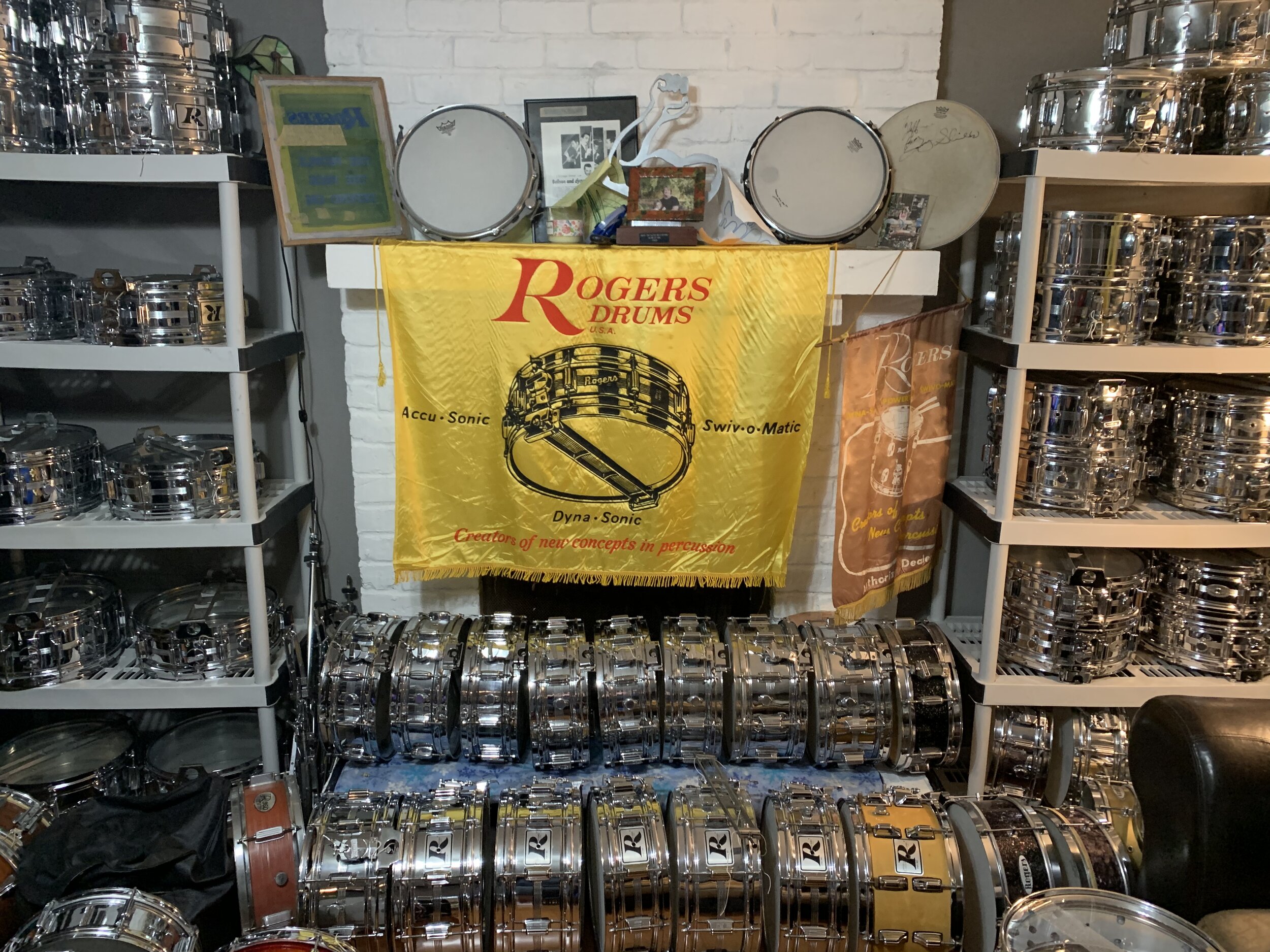
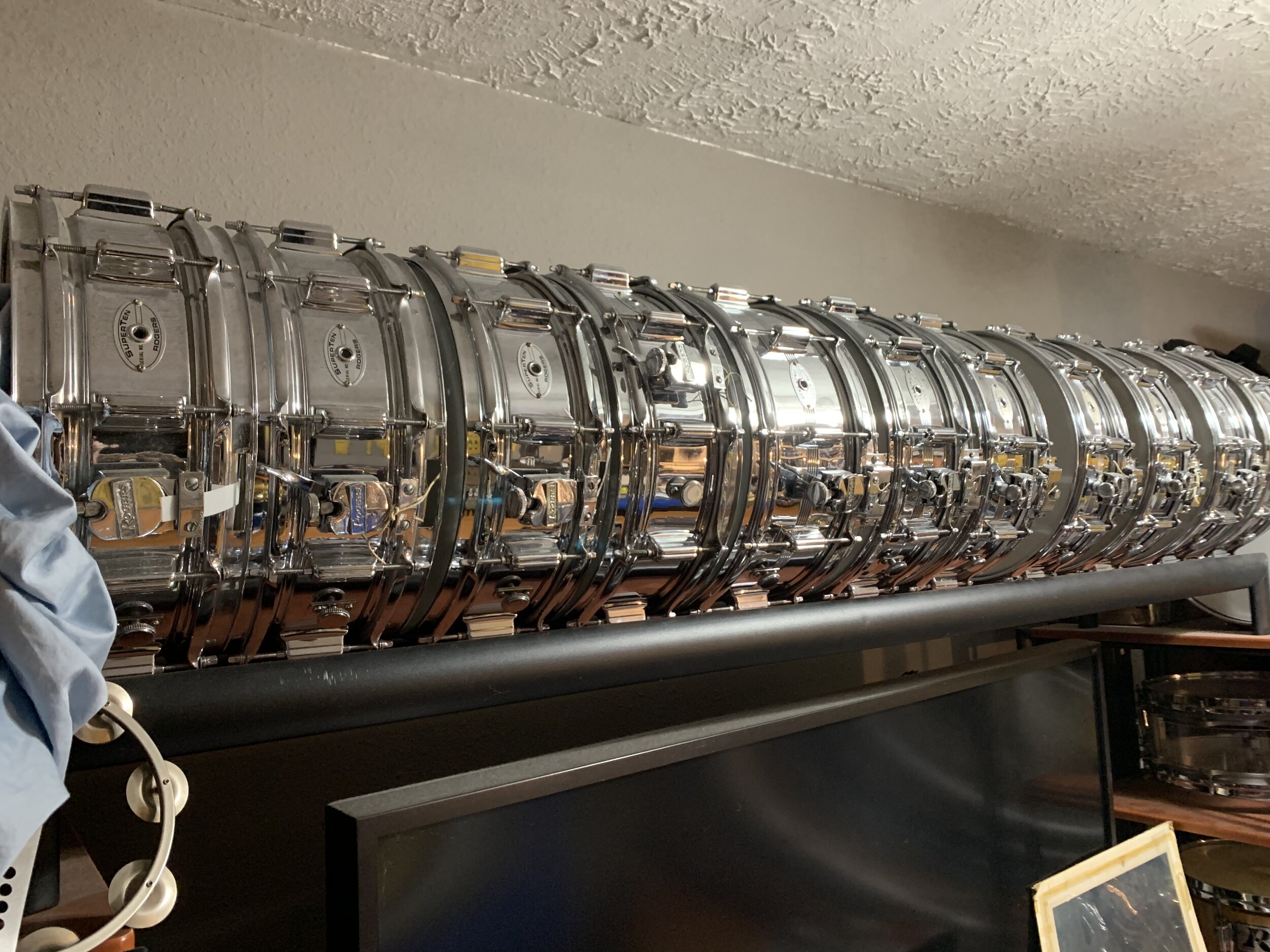
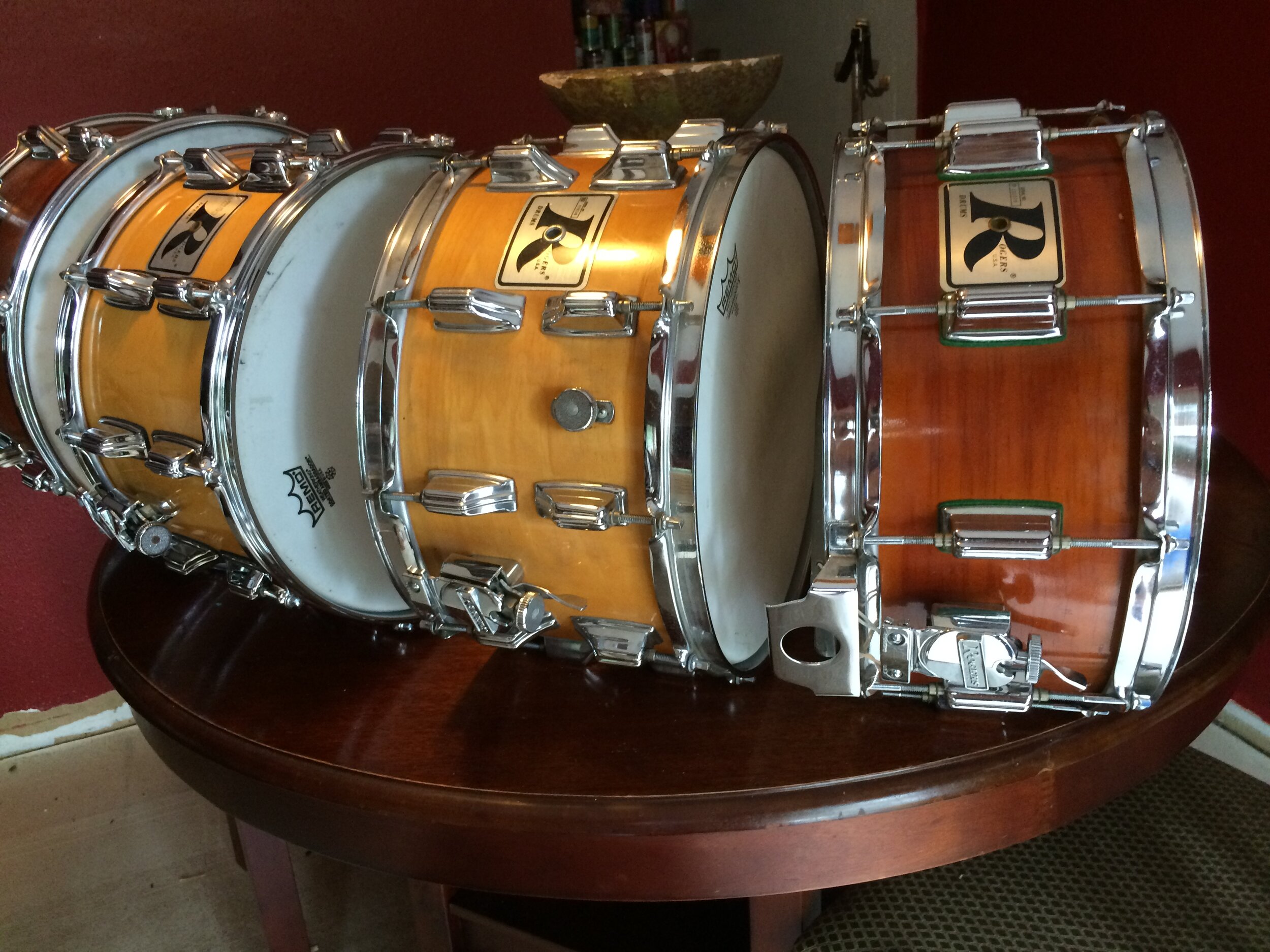


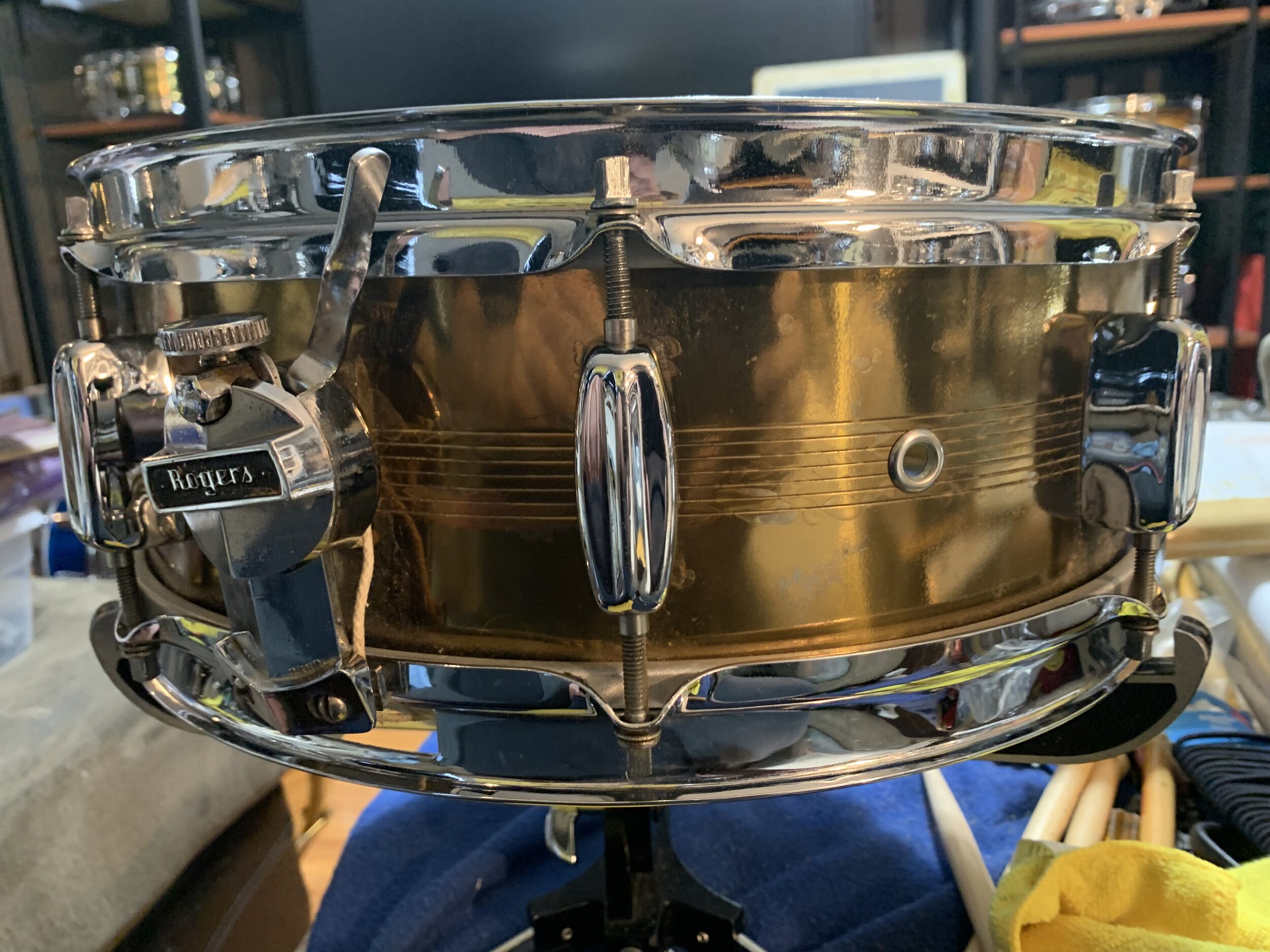


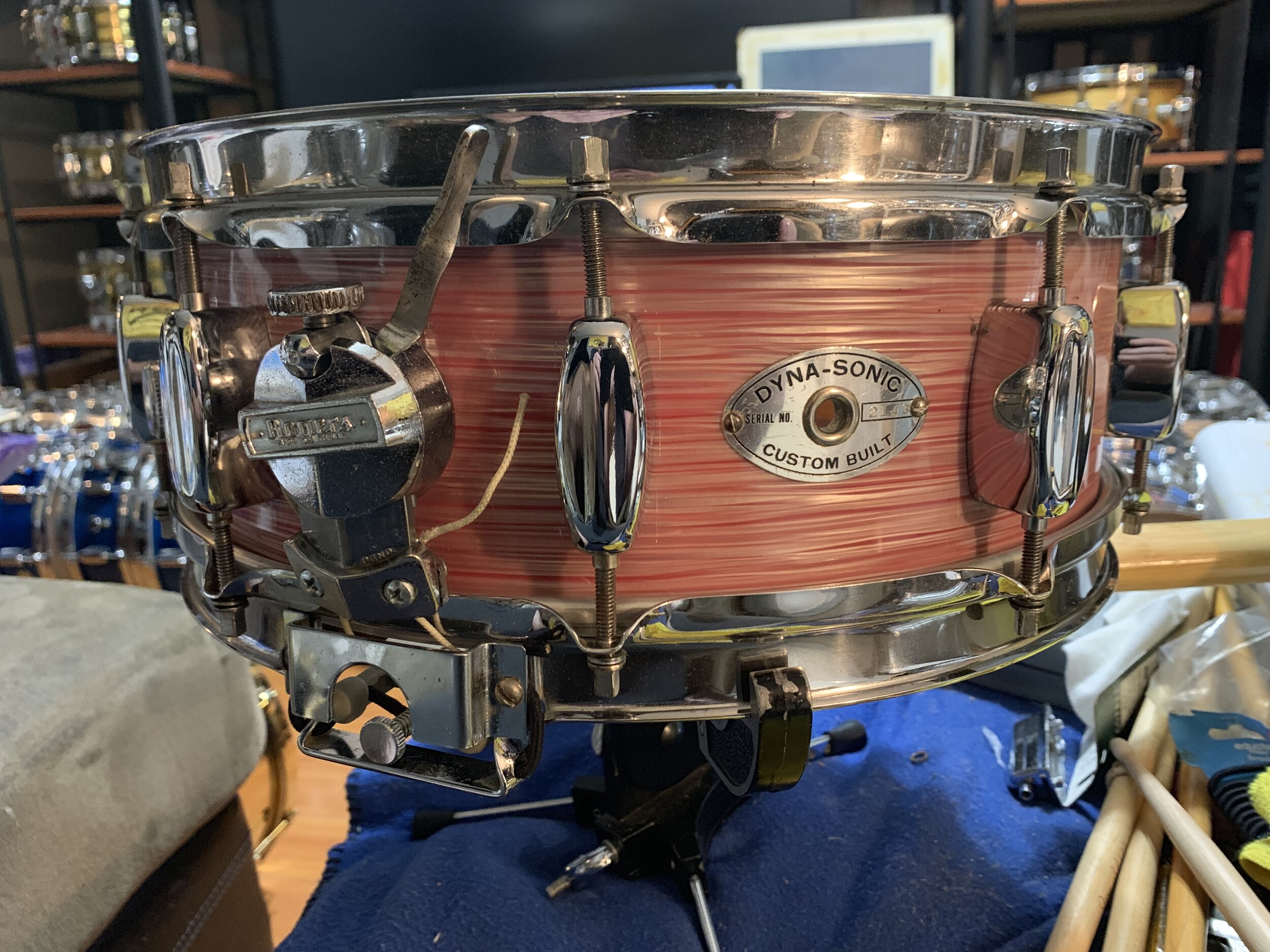
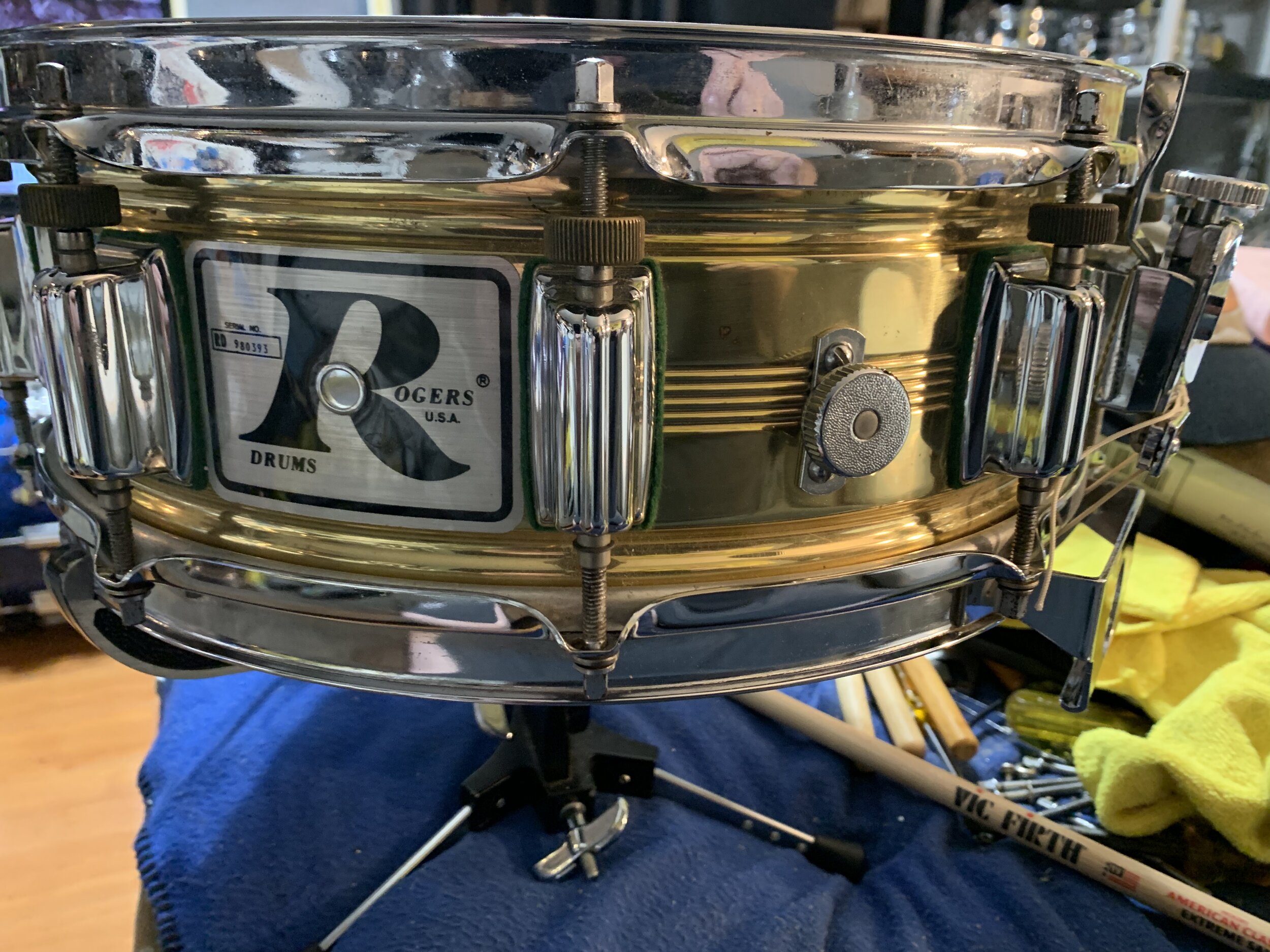

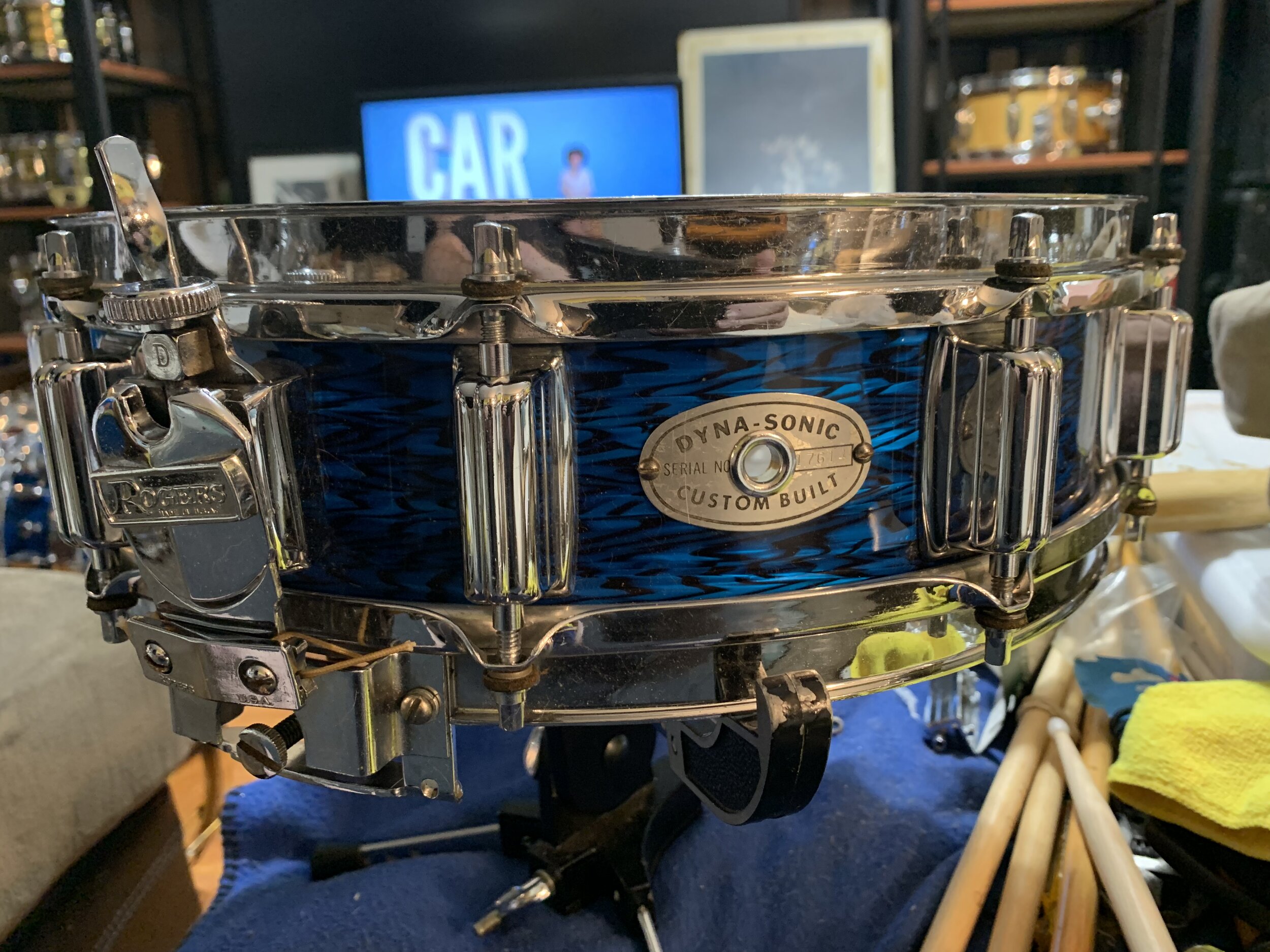
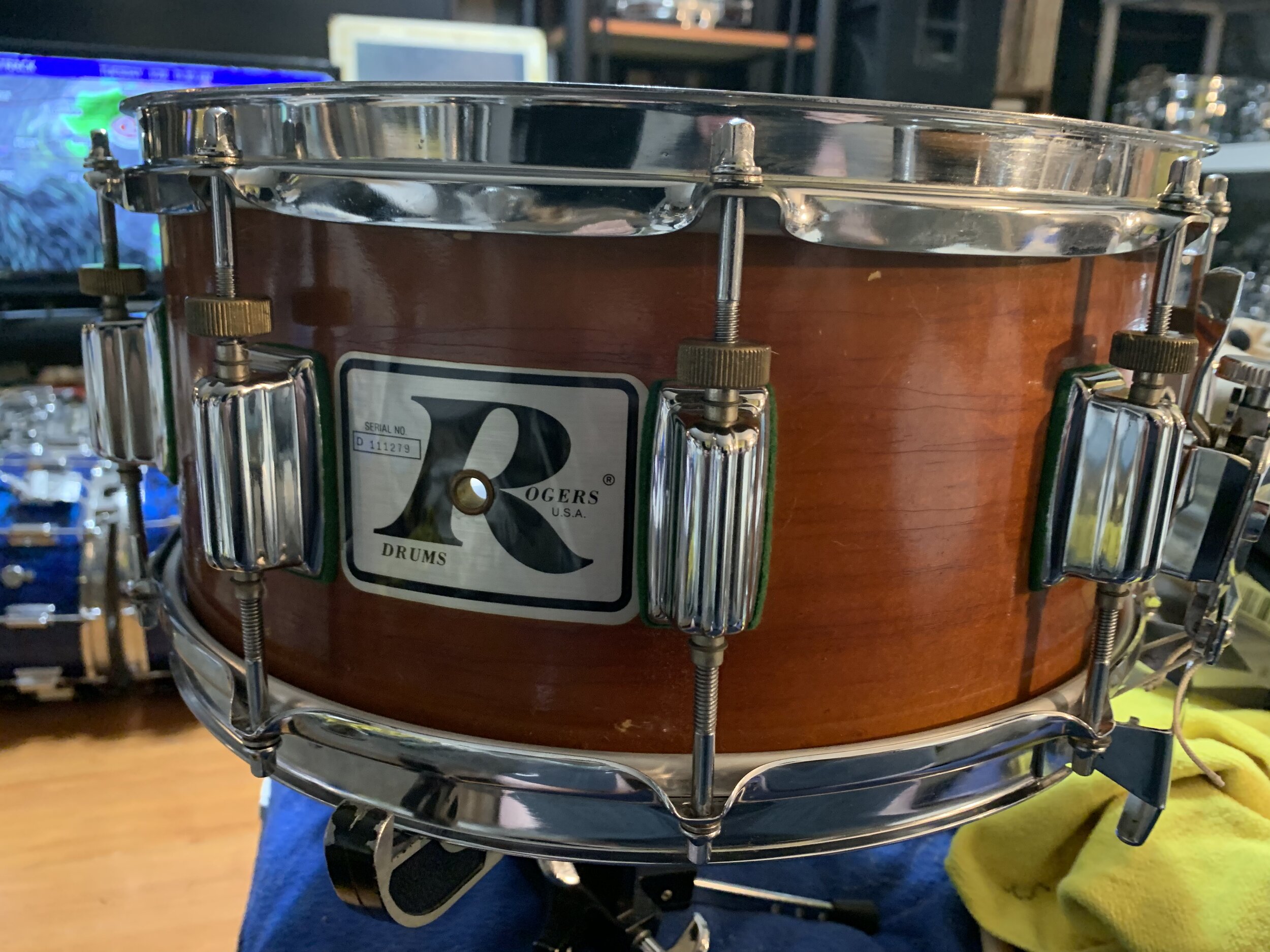
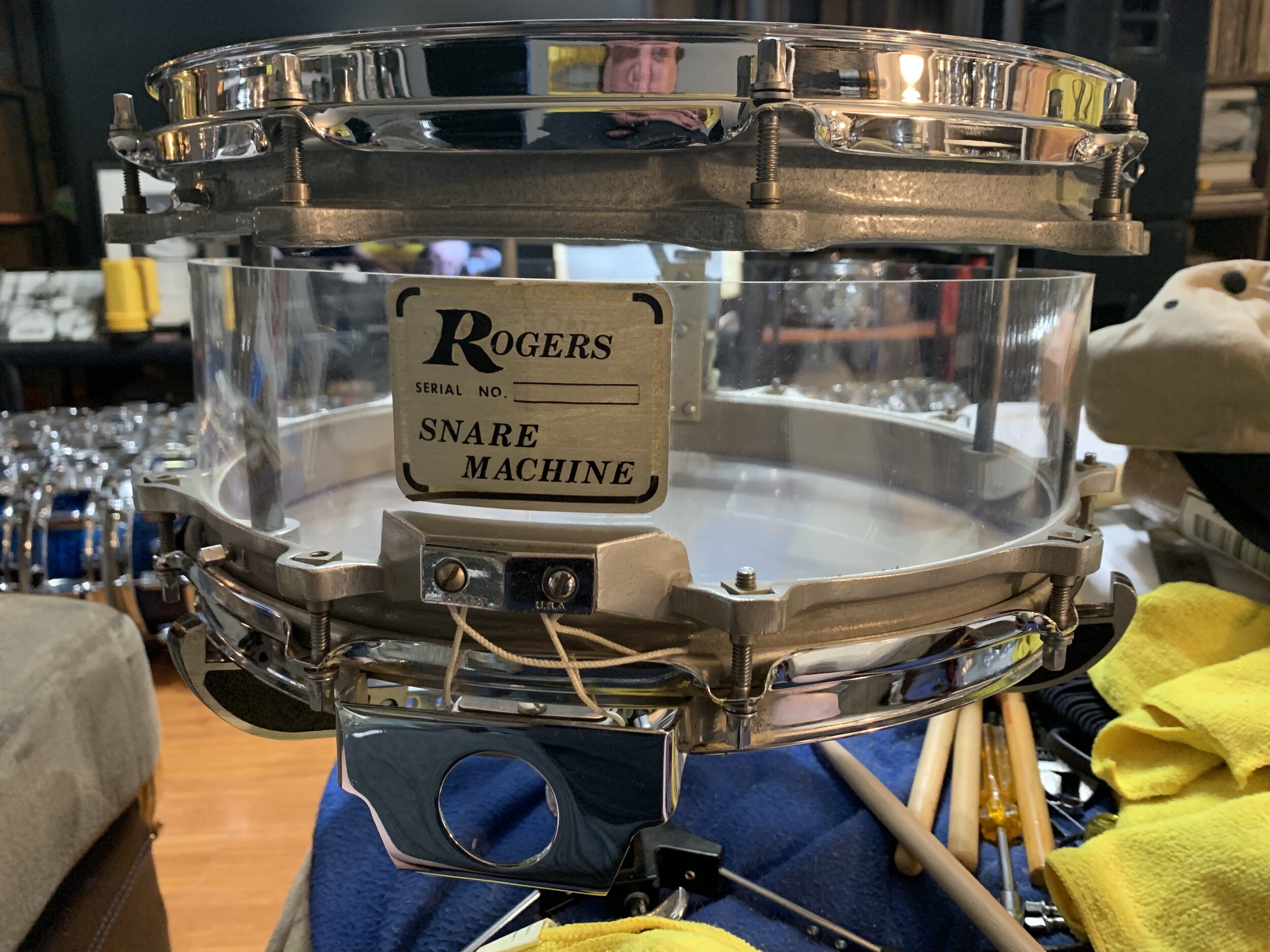
Welcome everyone to my Rogers World! I am super excited to have this fantastic opportunity to share my love for these amazing drums with the readers of ‘Not So Modern Drummer.’ My passion for drums started when my family lived in Venezuela.
Read moreCapri Pearl to me is like a wonderful mix of vintage Rogers Mardi Gras and Ludwig Sparkling Galaxy Pearl (my previous favorite). As I did more research on the rarity of the wrap, I soon discovered there were different variations as it was made from 1958-1966.
Read moreIn 1967, Yamaha introduced their first drum set - the D20 and D30. From their first conception, these drums were made from birch. The ends of the master ply are cut diagonally, ran through the glue machine and then put into the mold. Once they overlap the diagonal unto itself they hit the joints so they are locked in. Each seam is staggered 120 degrees so that the tension of the shell is evenly spaced. Once this is done, they stick an airbag in the middle of the shell so the glue is evenly spread throughout the drum. This method doesn't require the wood and glue to be put under high temperatures to create a bond.
Read moreThere was a time many years ago when a 3-piece combo kit or “outfit” was all a jobbing drummer needed. There was no room for any “floor tom” in a cab. And certainly not on any subway train. So when the opportunity arises to purchase a set in the bass drum, tom tom, snare drum format: do we think one can find a matching floor tom to make our 4 piece kit dream normalcy come true?
Read more….One such finish was called DeLuxe Marble and it was a short-lived finish that was painted on the shells to look like faux marble. The finish first appeared in the 1941 catalog and it lasted through WWII. Because a 10% metals law was put into effect during WWII limiting the use of metals on products, WFL was forced to design a drum made mostly of wood. That means that there were very few sets made in DeLuxe Marble that featured all-metal lugs and hardware made pre- WWII.
Read more